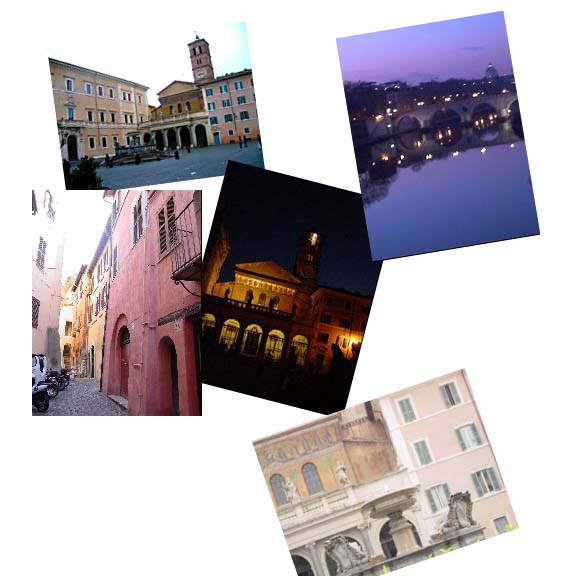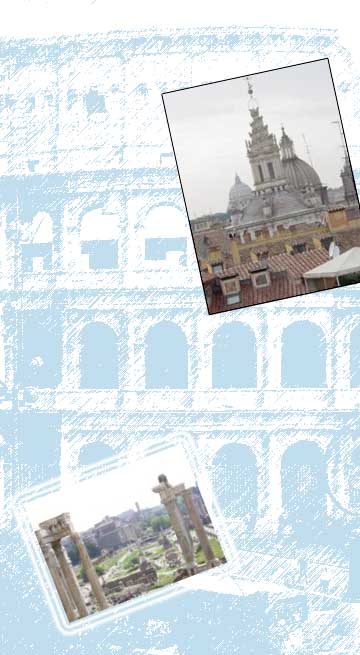|
From the beginning of Roman history (754-509 BC), the Trastevere area was an hostile part of the city belonging to the Etruscans.
Rome conquered it in order to have the control of the river from both the sides. In any case, this had only a strategic aim,
Rome was not interested in building anything on that side; in fact the only connection between Trastevere and the rest of
the city was just a small wooden bridge called "Sublicius".
At the time of the Republic, a lot of people working on the river, such as sailors and fishers, was living in Trastevere.
There was a lot of people coming from the East, too, mainly Jews and Syrians.
The area started being considered part of the city under Augustus, who divided Rome in 14 regions (regiones in Latin);
the modern Trastevere was the XIV and was called Trans Tiberim.
Anyway, it really became part of the city with Aurelianus (270-275), who made larger protecting walls to include Trastevere
and the Vatican hill. Thanks to the wealth of the imperial age, several personalities decided to build their villa in Trastevere:
Clodia, Catullus' friend, and Julius Caesar (his Horti Caesaris). The regio included two of the most ancient churches of Rome,
the Titulus Callixti, later called basilica di Santa Maria in Trastevere, and the Titulus Cecilae, Santa Cecilia in Trastevere.
In the Middle ages Trastevere had narrow, winding and irregular streets; moreover, because of the so called mignani, jutting
foreparts on buildings' fronts, there was no space for carriages to pass. At the end of the 1400s these "mignani"
were removed, but, in spite of that, Trastevere remained a mazed of narrow streets. There was a strong contrast between the
rich and big houses of richer people and the small damaged houses of the poorer ones. The streets had no kind of pavement
until the end of the 1400, thanks to the will of Sixtus IV, who paved the main streets, first using bricks, then sampietrini,
more suitable for the transit of carriages. In 1586, because of Sixtus V, Rome was divided again in 14 regions: Trastevere
was the XIII and was together with another part called Borgo. Thanks to its partial isolation (it was "beyond the Tiber")
and to its multicultural environment since the ancient Roman period, the inhabitants of Trastevere, called trasteverini, were
considered almost a population of its own: they were people of known tenaciousness, pride and genuineness. Moreover the women
from Trastevere were considered very beautiful because of their very dark eyes and hair and their pretty faces. In 1744 Benedict
XIV made a revision of the limits of the regions of Rome, putting Borgo by its own and giving Trastevere the modern limits.
Trastevere still keeps its peculiarity thanks to its narrow streets covered by sampietrini, surrounded by original medieval
popular houses. At night the streets are crowded by both Italians and foreigners because of the many establishments, stores,
galleries and restaurants.

|
